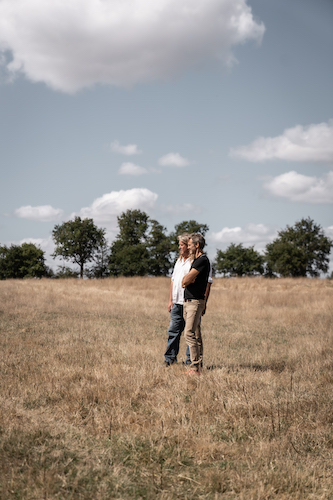Quite some time since my last post, and since there’s been a few difficult moments, burns, cuts and even managed to stab myself (purely by accident, I might add) ! So, in today’s post I will cover
So, organic food and sustainable fish first of all. For a few months now, I’ve known that what is important to me is the produce, the producer and the quality of the product. Whether it’s because I have some catching up to do, or simply because, like Terry Laybourne, in my opinion it all starts with quality products regardless of the final dish being prepared. As I’ve already said elsewhere on this blog, it’s not only quality, but also the link with “local” produce is important to me….creating the link with the people and identity of a particular region.
I’ve been reading about the seasonality of fruit and veg in France, as well as checking up on what is available in my home region of Northumberland. In addition, at school we’ve been looking at fish, beef, veal (strangely not very available in England, at least not in Northumberland), lamb, offal, veg & fruit. This reading has been backed up by being able to work with good quality fruit, veg, meat and fish at La Fontaine – seeing how the quality is measured by the chefs. There’s a hell of a lot to learn and discover, a journey which is just beginning and should never end – especially when you consider only one particular food source, fish for example, and you touch upon the huge depth of information / variety that exists just in the UK and France….even in France Sea Bass has several different names (Bar or Loup de Mer) depending upon where it is fished, with different breeding periods between Channel / Atlantic / Mediterranean bass.
On the topic of fish, and particularly sustainable fish, I’ve been reading a fair bit these last few weeks (partly in preparation for our meeting with the London chef Tom Aikens who champions this topic). It’s such an enormous topic that it’s all a bit much at times – I’m trying, at the same time, to get to know fish, their names in English & French, seasonality, their availability / vulnerability, adult size (and thus the minimum size they should be when buying them), their cost, the different techniques for catching them and so on….so loads to take in. But fascinating.
With regards to organic food, I’ve been checking out the different shops in Paris which deal with organic fruit and veg – Naturalia, CanalBio (specific to the 19ème arrondissement), Nouveaux Robinsons, La Vie Claire. They’re all more expensive than our local greengrocer and Monoprix, though Nouveaux Robinson seems to be by far the best value – generally not being much more expensive than what we currently buy (unlike La Vie Claire which is outrageously expensive). I still don’t know why BIO is more expensive – maybe because the crops are less “controlled” and thus yield is not always optimal and thus the producer charges more to compensate ? Anyway, as with many things at the moment, I am at the beginning of understanding what BIO is about.
At the end of next week is our trip to London. Really looking forward to getting my French collegues’ reactions to what’s going on in London. I’ll be taking photos and film of the visit so you’ll be able to see what we got up to in a week or so’s time.
I’ll sign off with a short note about my sagging confidence at the moment. I’m not feeling creative, I want to be tested in a kitchen working a service at the hot plate (to prove to myself that I can do it – I know that I can do “cold starters” for 100, but cooking the main courses ain’t the same thing !). Went out to eat last night with my wife at the Ziggothèque in the 13ème in Paris – an opportunity to talk with the chef who is someone that I would like to work for. It was a really good evening – good food prepared by a chef who tries to get good products, who goes to Rungis (Paris’ main market) 2 or 3 times per week, who makes his own stocks and who was available to chat for quite some time. We’ll see what comes of it. I also boosted my confidence by spending today preparing the meal for tomorrow lunchtime when a friend comes to eat. I’ll post the photos in a few days when the final meal is available.
OK, I’ll sign off. I’m meant to be writing more, but shorter, posts…..so this isn’t a very good start….sorry !….and Happy Easter to you all.
http://www.chefsdiary.com/archives/105


I suspect BIO is more expensive for the reasons you’ve picked out – the produce generally needs more looking after than its non-organic equivalent, and yield is generally less uniform/reliable. Plus, until recently, there hasn’t been the demand, so prices haven’t been competitive. Still, our knowledge of organic farming is improving in leaps and bounds, and – over in the UK at least – prices are coming down all the time.
As for your sagging confidence – hang in there! I’m sure you’re not the only trainee chef who feels/has felt like this. I hope you get the opportunity you want, and that your creative urges find a suitable and appreciative outlet!